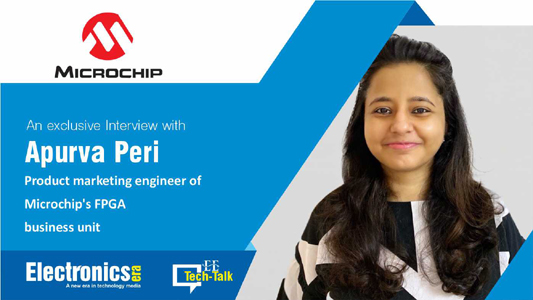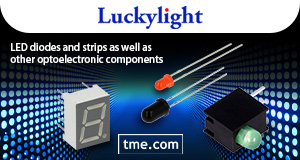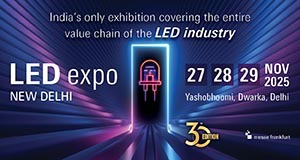Q. What do you think are the main bottlenecks in the current development of robotics technology?
A major bottleneck lies in integrating high-performance computing with real-world constraints like power, size and real-time response. Modern robotics applications demand the processing of large sensor data, especially from multiple high-resolution cameras, under tight latency and thermal limits. However, many popular compute platforms like GPUs and embedded SoCs aren’t designed to scale with direct sensor inputs, especially interfaces like MIPI® CSI-2 or SLVS-EC. This creates added complexity in system design and slows down deployment. Add to that the increasing need for secure, safety-critical performance, and the challenge becomes even more pronounced.
Q. What specific technical investments have Microchip made in the robotics field?
Microchip has been investing in robotics from the ground up by focusing on what we do best: power-efficient, secure and reliable compute for edge applications. We’re widely recognized as an industry leader in power efficiency in the mid-range FPGA class, which is critical in robotics where space, thermal headroom and battery life are often constrained.
Beyond the inherent benefits of our PolarFire® FPGA and SoC FPGA architecture, which makes them well-suited for robotics due to the deterministic operation, instant-on behavior and low static power, we’re building a broader portfolio of hardware, IP and development platforms to support these applications holistically.
One example is our Smart Embedded Vision (SEV) offering. It includes comprehensive vision development kits and IP that span the full imaging pipeline—from sensor interfaces like MIPI CSI-2 and SLVS-EC, to transport standards like CoaXPress® and display outputs including HDMI and DisplayPort. This makes it easier for developers to bring up multi-sensor vision systems quickly.
Of course, AI is the biggest requirement today in robotics. We support edge AI in two ways: first, through on-FPGA acceleration using our VectorBlox™ Software Development Kit (SDK), which enables CNN inference without needing prior FPGA expertise. Second, for applications that pair with external AI accelerators like GPUs, we enable AI offload via our PolarFire Ethernet Sensor Bridge, which aggregates and streams sensor data directly to platforms like NVIDIA Holoscan.
Altogether, our investment is aimed at addressing robotics challenges in a comprehensive, system-level way—not just with silicon, but with the supporting software, IP and infrastructure that developers need to bring real-world robotics applications to life.
Q. What unique advantages does the PolarFire® FPGA/SoC FPGA offer compared to traditional FPGA or MCU solutions?
PolarFire and PolarFire SoC FPGAs are purpose-built for low-power, real-time computing at the intelligent edge, making them ideal for next-generation robotics. Traditional SRAM-based FPGAs often struggle in robotics platforms due to high static power consumption and long boot times. In contrast, PolarFire devices utilize non-volatile technology that reduces static power by up to 1,000 times and supports near-instant boot-up, eliminating the need for external configuration memory and simplifying system complexity.
With their power-optimized SERDES architecture, PolarFire FPGAs achieve over 50% total power savings at comparable logic densities. Robotics developers are building compact, fanless platforms that operate reliably in space-constrained or thermally sensitive environments, such as autonomous mobile robots (AMRs), surgical systems and collaborative arms (cobots).
The non-volatile fabric also brings intrinsic immunity to single-event upsets (SEUs), which is critical for robotics operating in industrial, aerospace or outdoor environments where system integrity and uptime are non-negotiable.
Security is engineered from the ground up in the PolarFire platform. A comprehensive suite of hardware- and software-based protections ensures device and data security across the robotic system. PolarFire FPGAs and PolarFire SoC FPGAs include built-in anti-tamper features, NIST-certified crypto engines, RISC-V®-based physical memory protection, secure boot and a secure supply chain enablement that are vital for autonomous platforms in medical, defense and industrial automation sectors.
As robotics solutions push the boundaries of AI, vision and deterministic control, FPGAs are increasingly preferred for their flexibility, parallel processing and real-time determinism, especially when requirements are evolving or don’t yet warrant a fixed-function ASIC. While MCUs and MPUs dominate mature, high-volume product phases, PolarFire FPGAs are the optimal choice during the innovation phase when power, performance and adaptability are most critical.
Q. What is the main value of your Ethernet sensor bridge in robotics applications?
The PolarFire® Ethernet Sensor Bridge was developed in collaboration with NVIDIA as part of a strategic initiative to simplify sensor integration for AI platforms like Jetson AGX Orin and IGX. These platforms offer strong GPU performance but lack native support for high-speed sensor interfaces like MIPI CSI-2 or SLVS-EC. Our bridge helps by capturing sensor data and streaming it over 10G Ethernet, which is widely supported and simplifies system design.
It’s built around the low-power PolarFire FPGA and includes dual MIPI inputs, dual 10G SFP+ ports and an FMC expansion slot for interfaces like CoaXPress, SDI and JESD204B. It’s also fully compatible with the NVIDIA Holoscan SDK, enabling low-latency data acquisition and pre-processing directly at the edge.
We’ve seen the strongest traction in robotics, where teams often need to integrate multiple image sensors, such as stereo or multi-angle cameras, and additional compact sensors for perception or navigation. Ethernet-based data transfer helps make these setups more scalable and modular. It’s a practical solution for teams building high-performance vision systems without the overhead of custom board design.
Q. How does Microchip’s power module address power consumption and space` constraints in robotic systems?
Our power modules reflect Microchip’s ethos of smart, connected and secure design. They are engineered to save board space, simplify PCB complexity and deliver excellent thermal performance in compact packages. Given Microchip’s broad portfolio of FPGAs, MCUs, MPUs, networking and analog products, our power modules are designed for seamless integration with pre-characterized EMI and DC performance for low-, medium- and high-voltage modules. Available in Silicon (Si) and Silicon Carbide (SiC) variants, these modules are ideal for industrial robots, autonomous drones, warehouse automation and other autonomous systems.
Q. Are your solutions suitable for small and medium-sized enterprises or robotics startup teams?
Whether it’s a large Tier 1 industrial automation company or a smaller startup—we support both with equal intent. As an FPGA vendor, we work with some of the biggest names in industrial automation, vision and embedded systems and we’ve built our ecosystem to be agnostic to company size or experience level.
Whether a customer has an in-house FPGA design team or is just starting out with minimal hardware experience, we offer a comprehensive set of evaluation kits, development tools, software stacks and documentation to meet them where they are. This applies not just to robotics, but across domains like medical, defense, factory automation and automotive. The goal is to make it as straightforward as possible to start developing with our FPGAs, regardless of the scale of the organization.
Q. Could you share the market feedback on the PolarFire® FPGA supporting NVIDIA’s Holoscan platform?
So far, the response has been quite positive. We’re seeing strong interest from robotics customers who are evaluating the PolarFire Ethernet Sensor Bridge to connect multiple sensors, especially in vision-heavy systems where they need high-throughput connectivity to platforms like NVIDIA Jetson AGX Orin. We’re also seeing emerging interest in the automotive and agriculture sectors, where there’s a growing need for sensor aggregation and edge AI acceleration.
In addition, we’re working closely with NVIDIA’s ecosystem partners to develop reference designs and modular solutions that incorporate the PolarFire FPGA sensor bridge solution. The aim is to make it easier for a wider set of developers, particularly those not already familiar with FPGAs, to adopt this capability in scalable, production-friendly systems.
Q. How do you see the future development trends of robotics?
We’re seeing robotics shift toward distributed, collaborative systems with more intelligence pushed to the edge, tighter integration between sensors and computing and growing emphasis on functional safety and security. The rise of collaborative robots (cobots) operating in shared workspaces is accelerating the need for systems that are not only smart but also predictable, safe and secure by design.
AI is playing a bigger role, but running models aren’t enough. You also need a deterministic response, robust data handling and secure communication. This is driving adoption of technologies like ROS 2, TSN, and OPC UA—which support interoperability—and shifting interest toward platforms that combine software-defined behavior with deterministic, safety-capable hardware.
As autonomy and collaboration grow across industries, from manufacturing and agriculture to healthcare, developers are looking for architectures that deliver low-latency performance, certifiability and resilience, without compromising on power or scalability.
Q. How would you summarize Microchip’s position in the robotics system industry in one sentence?
Microchip FPGAs enable advanced robotics with intelligent sensing, secure connectivity, scalable AI and power-efficient design and are optimized for size, weight, power and performance at the edge.











